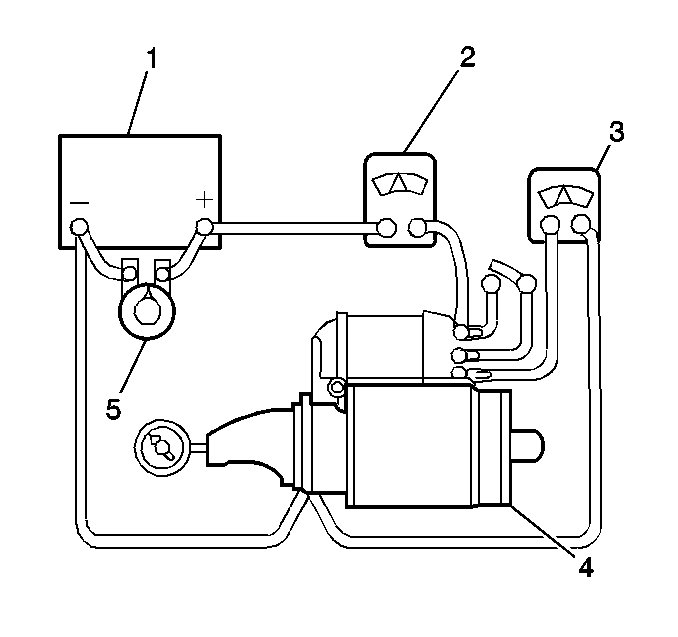Notice: Never operate the starter motor for more than 30 seconds
at a time. Allow it to cool at least two minutes before cranking again. Excessive
cranking can cause overheating, which will cause serious damage to the starter
motor.

Make connections as shown.
Close the switch and compare the RPM, current, and the voltage readings with
the values shown in the
Starter Motor Usage
table. If the starter does not meet these values replace the
starter. The following conditions indicate possible causes of starter problems.
- Rated current draw and no-load speed indicates normal condition
of the starter motor.
- Low free speed and high current draw indicates the following.
| • | Too much friction -- tight, dirty or worn bushings, bent
armature shaft allowing armature to drag |
| • | Grounded armature or fields |
- Failure to operate with high current draw indicates the following.
| • | A direct ground in the terminal or fields |
- Failure to operate with low or no current draw indicates the following.
| 4.1. | Open solenoid windings |
| 4.4. | Broken brush springs, worn brushes, high insulation between the
commutator bars or other causes which would prevent good contact between the
brushes and commutator. |
- Low no-load speed and low current draw indicates the following.
| 5.1. | High internal resistance due to poor connections, defective leads
or a dirty commutator |
| 5.2. | Open solenoid windings |
| 5.5. | Broken brush springs, worn brushes, high insulation between the
commutator bars or other causes which would prevent good contact between the
brushes and commutator |
- High free speed and high current draw usually indicate shorted
fields.

